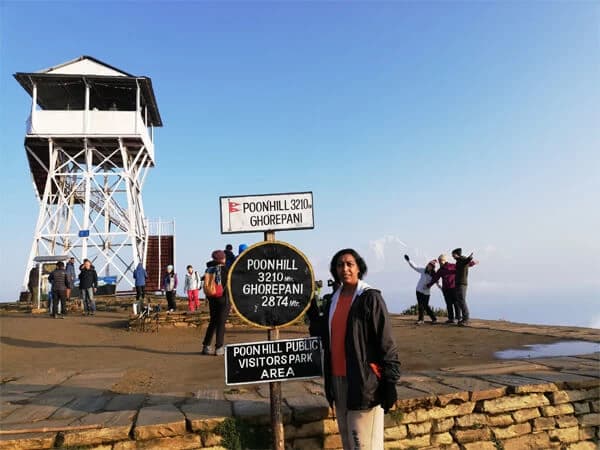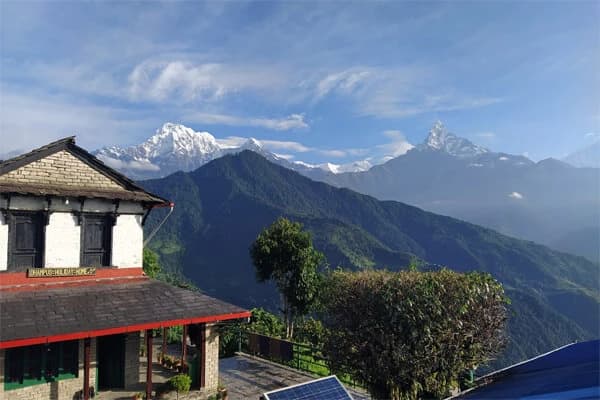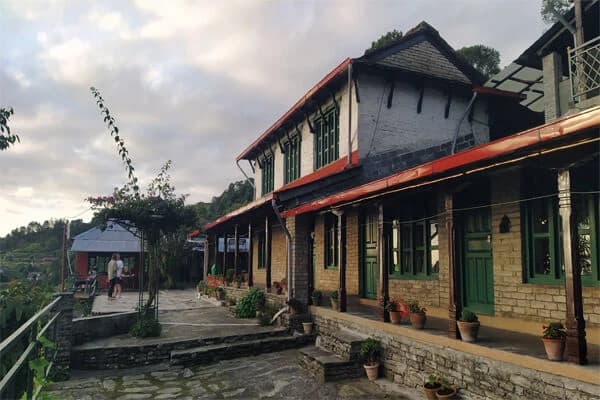The Himalaya Sunrise View Trek is a short and scenic adventure that offers stunning early morning views of snow-capped peaks like Annapurna, Dhaulagiri, and Machapuchare. Perfect for beginners and families, this trek combines natural beauty with cultural charm in a few unforgettable days.
It is still dark outside. Only a few stars shine through the chilly air in the deep, quiet sky. People in Ghorepani, a small mountain community, are rising early. It is approximately 4:30 AM. Except for the sound of feet on stone walkways and muttering among trekkers, the village is silent.
Everyone is preparing to ascend Poon Hill, a well-known view point in Annapurna region of Nepal. Some of the world's tallest mountains are seen from there. Seeing the sunrise is the primary reason people visit this location. There's something unique about the way the snowy peaks are illuminated by the earliest light. It has a serene, strong, and memorable feel.
The trek to Poon Hill starts just behind the village. Depending on your pace, the short but steep climb takes anything from 45 minutes to an hour. The majority of folks use flashlights of their phones or wear headlamps. Even if it's freezing, climbing keeps your body warm. You can hear individuals strolling next to you breathing quietly and the crunch of gravel beneath your feet. Achieving the summit before sunrise is the common objective shared by all.
The trekking trail feels well-used and safe, even in the dark. The route is marked by wooden rails and towering pine trees. You can pause and gather your breath at the little rest areas. The sky gradually gets lighter as you ascend higher. The stars start to fade and a gentle blue glow emerges behind the mountains. You have a feeling that something lovely is going to occur.
You are not by yourself when you eventually ascend Poon Hill. There are dozens of other trekkers waiting for the event to start, all of them wearing hats and jackets. Some have cameras. Others face the horizon while standing silently. The only sound in the crisp, chilly air is the gentle breeze blowing across the hills. The mountains are still hidden in shadow at this time. Not for long, though.
The Journey to Ghorepani
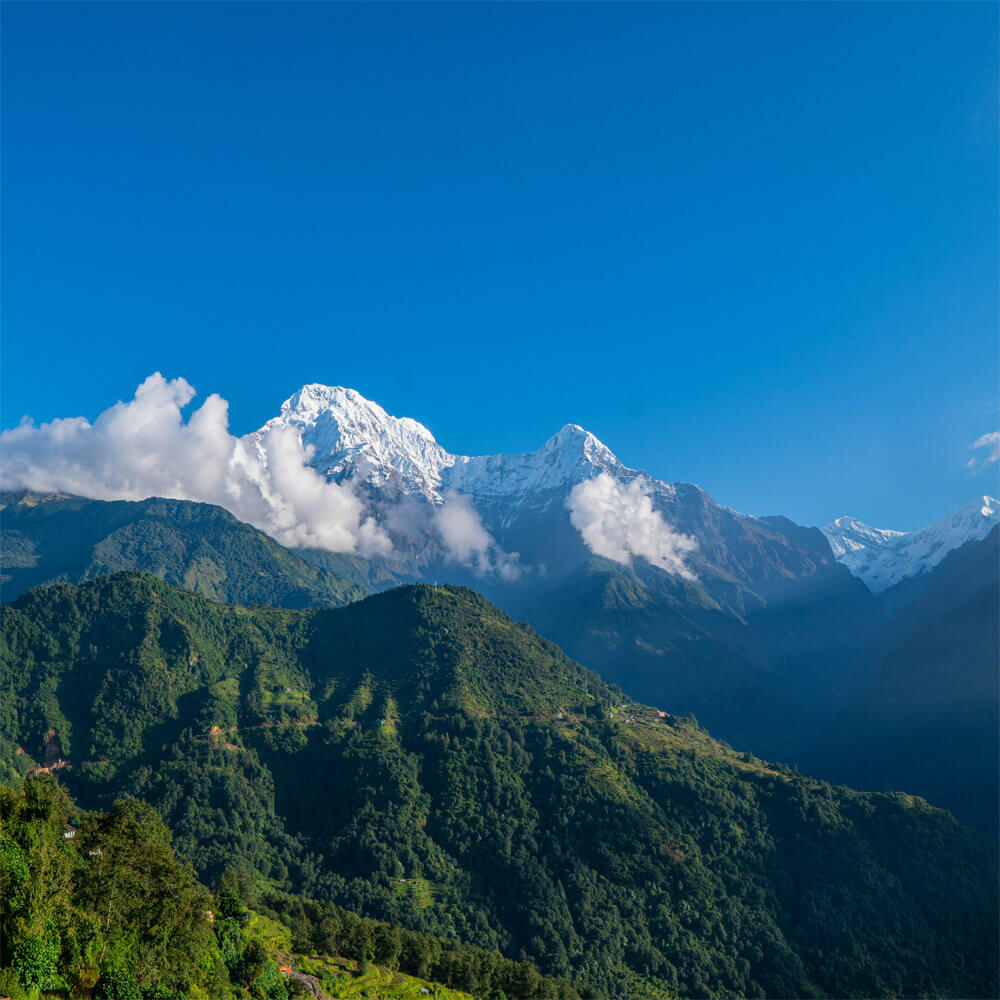
You must first arrive in the village of Ghorepani in order to travel to Poon Hill. This village is located approximately 2,874 meters above sea level. It is a section of well-traveled trekking path of the Annapurna Conservation Area. The Ghorepani Ghandruk trek begins from Nayapul or Tikhedhunga, which are a few hours' drive from Pokhara.
Depending on your pace and itinerary, the trek to Ghorepani takes two to three days. The track is clearly defined and travels through lovely scenery, including little villages, stone steps, green woodlands, and crystal-clear streams. Locals cultivate crops like millet and rice in terraced fields along the route. As they have done for years, donkeys may also be seen carrying items along the trail.
The ascent from Ulleri to Ghorepani is a more well-known section of the trail. There are thousands of stone stairs in this area. Some claim that there are over 3,000! Although it might be difficult on the legs, it is also gratifying. The forests get thicker as you ascend. You pass through regions covered in large rhododendron trees, which are the national flower of Nepal. These trees transform the trail into a natural garden in the spring when their red, pink, and white flowers bloom.
Little guest houses known as "tea houses" can be found along the walk. These places provide a basic place to sleep, food, and hot beverages. They are operated by local families and are warm and inviting. You can relax, chat with other trekkers, and enjoy the serene surroundings when you stop at tea shops.
Everything seems quieter the higher you go. The noise of city areas fades. You start to just hear your own footsteps, the sounds of birds, and the wind blowing through the trees. This silence feels full, not empty but full of calm and presence.
Before the sunrise trek to Poon Hill, the last destination is Ghorepani. As you arrive at the village, you will see stone houses, prayer flags, and breathtaking views wherever you look. On bright days, snow-capped summits are already visible in the distance.
You may feel tired by the time you get there. However, the vistas of the mountains, the clean air, and the friendly people will make it all worthwhile. The tranquility and natural beauty are what really make the journey unique. The climb is only one aspect of it.
A Night at Ghorepani
You have earned your break by the time you get to Ghorepani. This peaceful village is located on a ridge with mountains and forest all around. With its simple stone structures, peaceful walkways, and the gentle sound of wind rustling through trees, it seems like something out of a story book.
Trekkers can spend the night at one of the several tea houses in Ghorepani. The rooms are simple yet tidy, with common bathrooms and wooden walls. Although most trekkers also carry a sleeping bag for added warmth, the mattresses are warm if you use the thick blankets that are provided. The nights can be extremely chilly at this elevation, particularly during the winter.
Typically, dinner is served about 6 or 7 o'clock. The menus at most tea houses are similar and include fried rice, noodles, soups, pasta, dal bhat (rice with lentil soup and veggies), and hot beverages such ginger lemon tea. Trekkers love Dal Bhat because it's warming, filling, and provides you with wonderful energy for the next day.
There isn't much to do after supper, which adds to its allure. Some choose to talk quietly with other travelers, read a book, or keep a journal. Even though Wi-Fi is frequently accessible for a minimal cost, many people decide to disconnect. After all, you are invited to slow down by the mountains.
Most individuals prepare their gear for the early morning trek before bed. The backpack includes a bottle of water, gloves, a hat, a flashlight or headlamp, warm clothing, and sometimes a food. The Annapurna sunrise trek often begins at 4:30 or 5:00 in the morning. If at all possible, go to bed early.
It is quiet and freezing at night. A dog barking in the distance or the sound of the wind outdoors may cause you to wake up once or twice. However, if you pay great attention, you will hear a deeper silence that is calm. You start to feel like you're a part of something bigger, something older, amid this silence. It serves as a helpful reminder that this trip is about more than just reaching a viewpoint.
The Poon Hill Trek for Best Sunrise
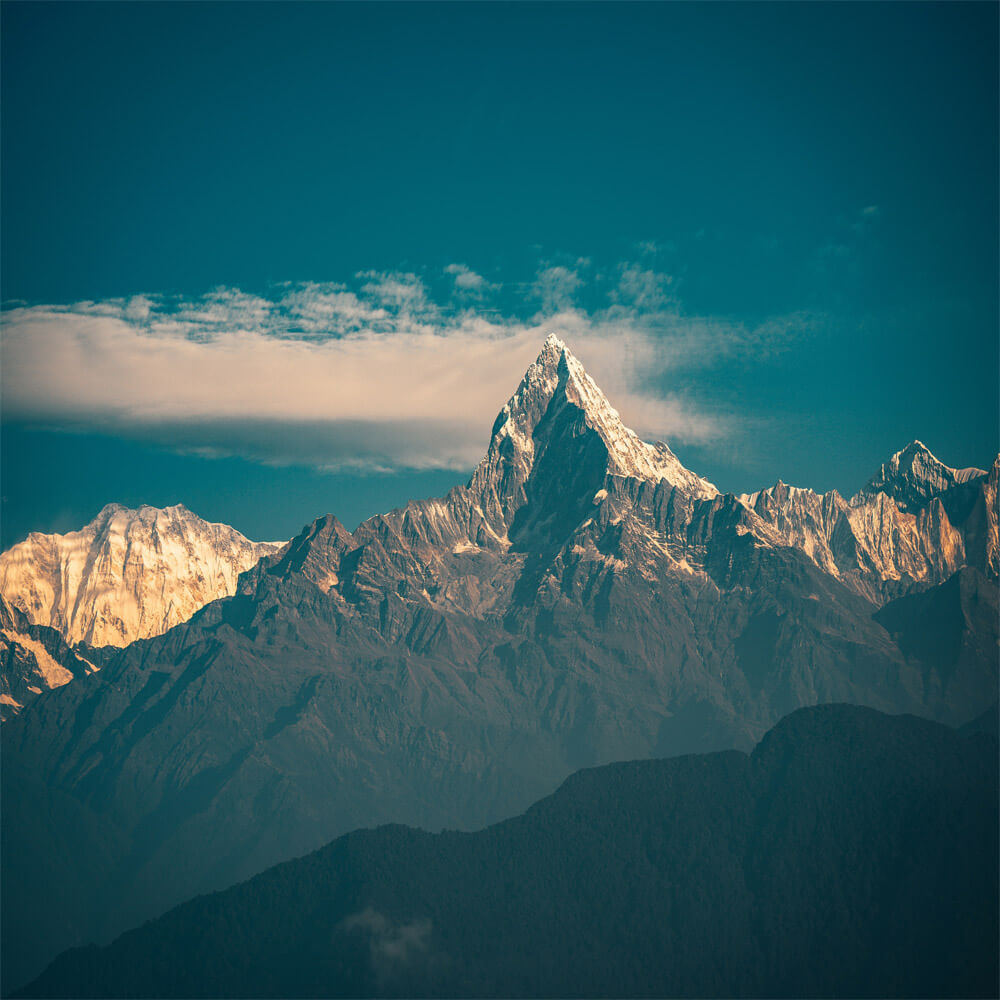
The village is still dark in the morning. The path is only illuminated by spotlights and moonlight, and the stars above are dim. Everyone wears layers since it is cold, sometimes below freezing. As you start the ascent, you can see your breath in the air.
The Poon Hill trek begins just outside of Ghorepani. It is steep and roughly 1.5 kilometers uphill. The uneven stone steps might get slippery in the early dew or frost. Nevertheless, the route is broad and simple to follow. You are rarely by yourself, and there are signposts along the road. The early morning trek is being made by trekkers from all around the world.
People move with quiet focus, taking slow steps to conserve their breath. The trek is difficult in the dark and cold. It is short and takes between 45 min to an hour on average. You may occasionally pause to rest and glance up. Slowly, the sky shifts from a deep blue to a gentle purple. The black silhouettes of far-off mountains start to show against the increasing brightness of sky.
A large, open area with benches and a small viewing tower awaits you at the summit. Silently, people gather, adjusting their cameras, sipping tea from a vendor, or just gazing east. The enthusiasm in the air keeps you warm despite the bitter cold.
Then the magic starts.
There is a dim glow on the horizon. Light spills over the ridges slowly. Annapurna South, Machhapuchhre (also known as Fishtail), Dhaulagiri, and numerous more mountains are touched by the early rays of the sun. The snow becomes golden and then orange as the sun descends. Every second, the colors change.
Everyone observes in silence. It fills with emotion, not just the beauty of the scenery. The mountains are ancient, tall, and motionless. They will remain here for a very long time, having arrived here long before us. You feel small at that time, but not in a negative sense. You sense that you are a part of something timeless and huge.
There are those who snap pictures. Some just stand and observe. The silence is deep and meaningful. It is one of those precious moments when everything seems to stop and everything feels perfect.
Poon Hill Sunrise
The Himalayan Sunrise view become more visible as the sun rises higher. They appear quiet and distant at first. However, they start to glow as the light intensifies. Pale pink, gleaming white, and gentle gold make the mountains come to life.
Annapurna South stands tall over you. When the first light strikes its snowy peak, it sparkles like a torch. The enormous Dhaulagiri looms to the west like a sleeping giant. Conversely, Machhapuchhre's distinctive Fishtail shape slashes through the sky like a blade. In Nepal, these mountains are respected. The locals think that gods and spirits reside there. It is simple to see why when you see them in the morning light.
This moment feels more than just beautiful for some reason. It is an experience that speaks to the soul. It is more than just a sunrise. You experience a range of feelings. I wonder Calm. Perhaps even a small amount of sadness, the kind that serves as a reminder of how fleeting and valuable life is.
Everyone around you is whispering. Others sit on benches or on the chilly grass, while others stand silently with their hands in their pockets. After a while, many people put aside their cameras because they realize that no picture can really convey the experience of being there, even when they click softly.
It doesn't feel noisy or hectic despite the crowds. There seems to be a mutual respect in the air, as though everyone knows that this moment should be savored rather than hurried. The sun keeps rising, the wind blows softly, and the peaks get brighter.
There's nothing you need to say. The mountains speak for themselves. People begin to move after a while. After a final glance and a few more pictures, they start to return to Ghorepani by foot. However, something has changed. You depart with more than just the view you came for.
What the Mountains Whispered
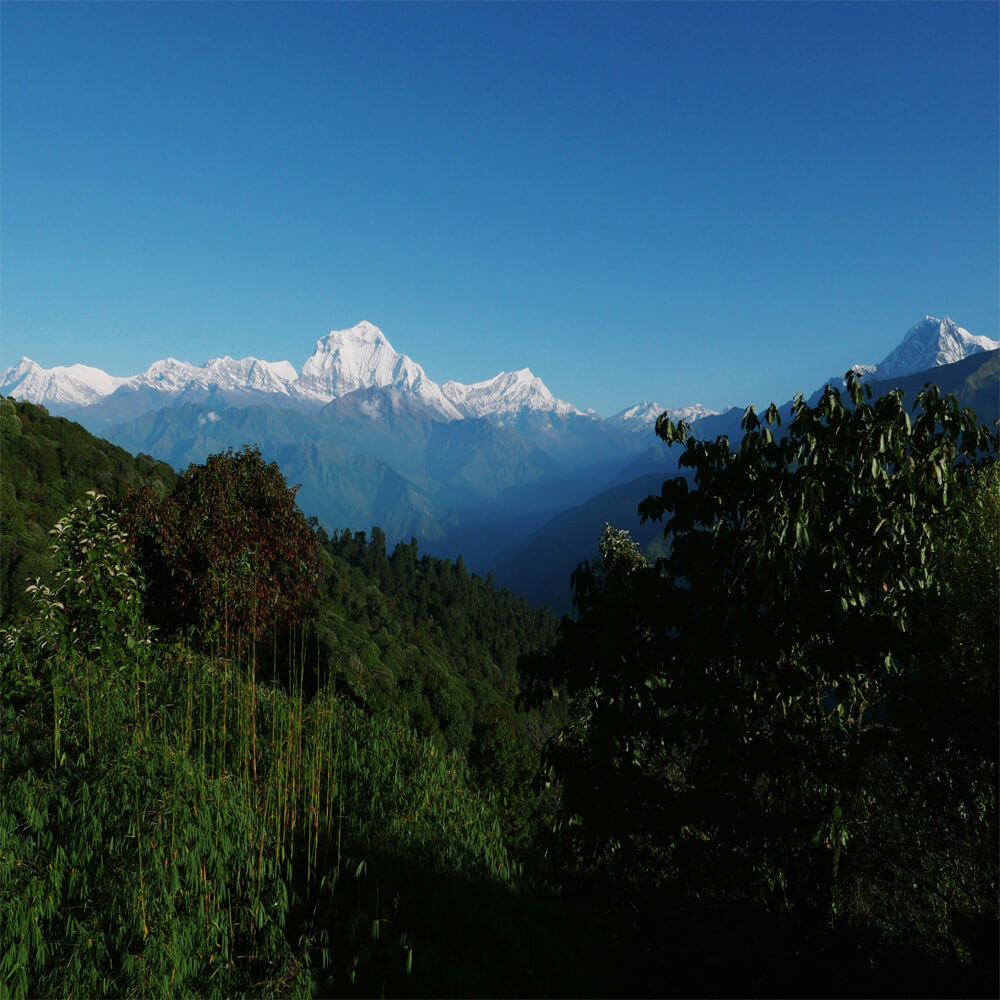
It is easy to walk back down. Now that the sky is light, you can see the surrounding forest, complete with tall trees, little flowers, and birds flying between branches. An hour ago, the route felt dark and unfamiliar; now, it feels warm and familiar.
You might not say much as you descend. Silence is encouraged by the event in some way. It's the kind that feels full, not left feeling empty. There is significance in the silence.
The mountains come to your mind. How silent they were. How they didn't have to make an impression. They simply stood motionless and strong. They have witnessed a lot. Time, weather, and generations of people moving past. Perhaps because they don't change much, they have the ability to change us.
There was more to that morning at Poon Hill than simply taking in the sunrise. It served as a reminder of how tiny we are in this big and beautiful universe. It was about taking your time so you could appreciate the quiet things, like the way light hits a ridge, the sound of trees rustling, and the calm that comes from not rushing.
They serve as a reminder to be present, to take a breath and to listen. They serve as a reminder that beauty can be quiet, straightforward, and gradual rather than loud or dramatic.
As you return to Ghorepani, you carry that whisper with you. The feeling stays after you leave the village and resume your journey. It follows you into new areas, across rivers, and through forests.
And a piece of you will remain up there, standing in the chilly morning air, watching the mountains sparkle, long after the trip is over, long after you get home, unpack your bag, and look through your pictures. Because sometimes the most important things are said by the mountains when they speak softly.
These are the murmurs of Annapurnas. They don't yell. They don't want attention from others. They do communicate something important, though, if you are prepared to listen.
The Descent
As you descend from Poon Hill, the terrain becomes less steep. The sun is high in the sky now, and the difficult climb is over. The trail is colorful with brown dirt, bright blue skies, crimson rhododendrons (if spring), and green trees. The air is warmer. It feels alive now, the forest that was quiet in the darkness.
Back in Ghorepani your tea house serves breakfast. You might eat toast, cereal, dal bhat, eggs, or something hot to drink. The place shows a serene sense of satisfaction. Everyone is grinning, talking quietly, and looking over pictures in their phones. The sunrise has done its work.
In Ghorepani, some hikers take a short break, while others carry on the same day. Many people continue on the trek from here, looping back down to Pokhara after passing via Tadapani and Ghandruk. There are still glimpses of the mountains throughout this section of the hike, which winds through thick forests and past secret waterfalls.
The smell of damp leaves, the sound of bees, and the texture of the bark all become more apparent as you descend. Your senses seem to have opened up. Not because you're exhausted, but rather because you want to savor the moment a bit more, you're walking more slowly now.
And it is what makes this trek so beautiful. The view is not the end of it. It stays in your thoughts, in your walking, your vision, and your behavior. The sunrise was just one moment. However, the feeling it left you with, the silent wonder remains. You gently tuck it inside and carry it down the mountain.
Useful Advice for Upcoming Trekkers
Here are a few basic yet useful things to know if you intend to trek to Poon Hill so you can concentrate more on the experience and less on the details.
Best Time for Himalaya Sunrise View Trek
Ideal season for Himalayan Sunrise View Trek is Spring and Autumn. Rhododendrons in blossom, sunny skies, and warm days characterize the spring season from March to May. Autumn season starts from October through November. Clear skies, steady weather, and crisp sights.
Although quieter, winter season from December to February is extremely cold. The monsoon season lasts from June to August, so be prepared for rain and leeches.
Options for Routes
Most trekkers begin their journey from Nayapul, which is roughly 2 hours drive from Pokhara. The typical path is:
Nayapul → Tikhedhunga → Ulleri → Ghorepani → Poon Hill (sunrise) → Tadapani → Ghandruk → Nayapul (or Jhinu for a hot spring stop). Depending on your speed, you can do this in 4-6 days. You don't walk the same trail twice because it is a loop.
What are the Difficulty of Himalaya Sunrise View trek?
This journey is regarded as moderate. Although no prior mountaineering expertise is required, you should feel at ease walking up and down for 4-6 hours each day. Thousands of stone steps make up the Ulleri stairs, which are difficult but manageable with breaks.
Required Permits
Two permits are required for the Poon Hill Trek. They are:
- Trekkers' Information Management System (TIMS) card
- The Annapurna Conservation Area Project (ACAP) permission
Before beginning the trek, you can get both in Kathmandu or Pokhara. If you are booking your trip with Nepal Trekking Routes, they will arrange it for you.
Packing Advice
- Excellent hiking boots or walking shoes
- Layers of warm clothing are ideal.
- Reusable water bottle (equipped with a filter or purification tablets)
- Snacks (energy bars, nuts)
- Personal items and toiletries
- Sun Hat, Sunscreen
Rucksack with rain cover.
- Headlamp for the dawn on Poon Hill
- Basic medical kit (altitude tablets, blister care, and pain relievers, if necessary)
- Keep the views in memory whether you are using a camera or a phone.
Tea Houses
Bringing a tent is not necessary. There are numerous tea houses along the trail that provide hot beverages, food, and a simple place to stay the night. The rooms are basic and hot showers can be more expensive. The staff is friendly and sincere.
Guided or solo?
The track is well-marked and easy to follow, so you can complete the hike alone. However, it's simple and reasonably priced to hire a guide or porter if you want assistance or local knowledge. Additionally, it boosts the local economy.
Conclusion: Himalaya Sunrise View Trek
Climbing a peak or seeking excitement are not the goals of the Poon Hill trek. It is about having enough time to truly observe your surroundings. Yes, the sunrise. But also, the calm villages, the roads through the forest, and the rhythm of your breath as you go up stone stairs in the early hours of the morning.
The Himalayas welcome your attention rather than requiring it. Gently they serve as a silent reminder of the important things are simplicity, patience, and presence. It is likely that you will leave with more than you hoped, regardless of whether you came for the view, a change of pace, or something unnamed.
The memory lingers even after you have gone home, polished your boots, and uploaded your pictures. Not only in your thoughts, but also in your character. A bit more slowly. A bit quieter. A bit more conscious. Perhaps that is Poon Hill's true gift. Not only what you observed, but also how it changed your perspective





